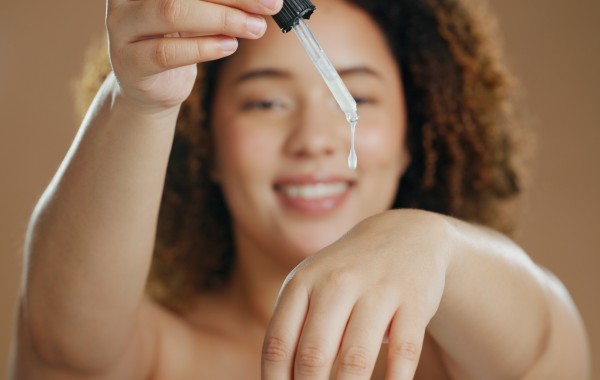How Do I Use?, Ingredients, Reviva Labs, Skin Care
How to patch test skincare
Patch testing skin care products at home is a simple yet crucial step to ensure that your skin is compatibility with new skincare products. This process can help prevent adverse reactions, such as rashes, allergies, or breakouts, by identifying how your skin might react to a particular product before you fully integrate it into your routine. Ultimately, patch testing is a preventative measure that allows you to use skin care products with confidence and peace of mind.
Getting Started
Starting with the basics, patch testing involves applying a small amount of product to a discreet area of your skin and observing for any signs of irritation or allergic reaction over a specified period. The inner forearm is a popular choice for patch tests due to its sensitive nature, which closely mimics the facial skin’s sensitivity. Alternatively, for products intended specifically for the face, the area behind the ear is also a good spot, particularly because it’s hidden and closely resembles the facial skin in terms of thickness and texture.
Start With Clean Skin
Before conducting a patch test, ensure your skin is clean and free from other products to avoid any interaction with other ingredients. Next, apply a small amount of the product — a dab is usually enough — and cover the area with an adhesive strip or bandage. This step is especially important for products that are liquid or gel-based, as it prevents them from spreading to other areas or staining clothes. Professionals generally advise to wait 24-48 hours before making a final assessment. Though, most allergic reactions or irritations will manifest quickly (nearly instantly or in minutes) – but for those with sensitive skin, to be absolutely confident it’s best to wait the recommend time frame. During this period, avoid showering the tested area or engaging in activities that could cause excessive sweating since moisture might dilute the product and skew the results.
Monitor & Observe
As you monitor the patch test area, look for any signs of redness, itchiness, swelling, or blistering. A negative reaction can range from mild to severe, so it’s crucial to pay close attention to any changes in your skin. If you experience discomfort or visible irritation, gently cleanse the area with water and a mild cleanser. This indicates that the product is not suitable for your skin. On the other hand, no reaction suggests that the product is likely safe for you to use.
It’s worth noting that some ingredients, particularly active ones like retinoids or exfoliating acids, may cause slight redness or tingling initially. This reaction doesn’t necessarily mean you’re allergic or that the product is harmful. Instead, it may indicate your skin’s adjustment period to a new active ingredient. However, if the irritation persists or is causing discomfort that’s a clear sign to stop using the product.
Always Patch Test If You Have Sensitive Skin
Patch testing is particularly beneficial for individuals with sensitive skin or those prone to allergies. However, it’s a good practice for anyone introducing a new skin care product into their routine. It’s a simple step that can save you from potential discomfort and the hassle of dealing with skin issues down the line. Moreover, it empowers you to better understand your skin and its tolerance levels, making you more knowledgeable and discerning about the products you choose to apply.
Remember, skin care is deeply personal, and what works for one person may not work for another. Patch testing is a testament to this individuality, providing a personalized approach to skin care that respects and acknowledges our unique skin needs and concerns. Patch testing at home is a straightforward and effective way to ensure the products you use are suitable for your skin, leading to a happier, healthier complexion. By adopting this practice, you’re not only protecting your skin but also investing in its long-term health and radiance.









